Antioxidant Mushrooms, from darkness comes nutrients, no bulls--t
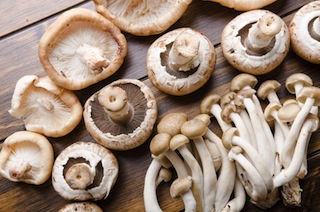
There's a well known phrase for mushrooms ... of "being kept in the dark and fed bulls--t".
In the dark is where many a specie of mushroom thrive well, and if you are looking for a low calorie food that is full of antioxidants, look no further ... you are looking at them!
Mushrooms are one type of fungi. Actually, to be more precise, they are the fruiting or flowering part of the fungi. However, not all fungi are mushrooms.
One report states that there are 8,000 varieties of mushrooms (of both the edible and inedible varieties) and another states as many as 140,000 varieties. In summary, we can safely say the variety is just huge (!) ... and what we see in the markets and supermarkets of the cities, are only a tiny fraction of the varieties which are known.
They live and grow on "others", so to speak, whether dead or alive.
As parasites (living on live hosts), they can cause slow death to the plant or animals.
While they need to live of others, their ecological existence is not a one-way street. They give back as follows:
- they can clean up the environment as they absorb all materials from their surrounding - whether good or bad.
- some species can also work in harmony with the plants, to provide the nutrients for the environment.
Since mushrooms will absorb all materials from their surroundings, for their growth - whether good or bad - we need to be cautious about where the mushrooms are obtained from.
Main Nutrients - Mushrooms
- Antioxidant: Ergothioneine (Amino Acid), Polyphenols, Vitamin C
- Other: Vitamin (B,C,D), Potassium, Magnesium, Iron

Interesting Stuff on Mushrooms
Native of:
- Different mushrooms from different parts of the world, such as :
Asia - Shitake, Enoki, Lingzhi/Reishi, Maitake
Now Found/Grown In:
- Some mushrooms, while native to one region are now found grown commercially, in other parts of the world.
The vegetative part of the mushroom called mycelium, grows in a thread like pattern, in a branching manner. The branching and expansion of mycelium can thread in a variety of patterns - such as those that are called "fairy rings" where the mushrooms or fungi grow in a circular ring pattern.
One report stated that there was once a large mycelium found in Oregon, USA, covering 1,500 acres.
Fungi, mushrooms included, are important ecological recyclers. They help decompose organic compound, including poisonous one, unless the poison can kill them. If the poison can kill the mushrooms, imagine what these poison can do to us humans and other animals species. Not a good thought.
They are so intriguing that they are featured in TV series - such as the popular para-normal series of aliens and unknowns. The famous X-files TV series of the 90s had 2 episodes on the mystique mushrooms.
Difference between Mushrooms and Toadstools
In general :
- Mushrooms are edible varieties
- Toadstools are the inedible or poisonous varieties
However, there is a mushroom called "death cap" while called a "mushroom" is in fact deadly.
Hence, while in general, there are the above two categories, we should not just go by their categorization alone to determine if they are of the edible varieties.
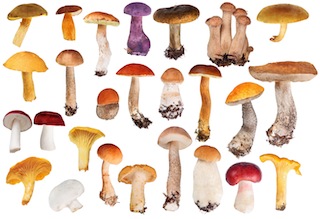 Mushrooms or Toadstools?
Mushrooms or Toadstools?Mushrooms used as Medicine and in Ancient Rituals
From archeological findings and drawings, it appears that mushrooms are often used in ancient spiritual rituals. One particular type used are psilocybin/psychedelic mushrooms which can causes psychedelic effects.
In Japan and China, mushrooms have long been used for its medicinal value. The more well-known today are:
- Lingzhi/Reishi
- Maitake
- Cordyceps/Tochukasu (or sometimes known as the "catepillar" or "worms" mushrooms)
Examples of Mushrooms
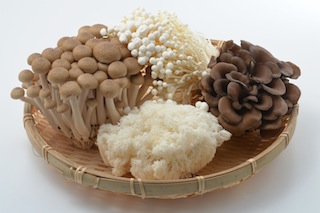 Mushroom Variety
Mushroom VarietyExamples of mushroom:
- Button mushrooms (white and brown varities)
- Cordyceps/Tochukasu
- Lingzhi/Reishi
- Oyster Mushrooms
- Shitake
- Enoki
- Portobello (same family as the Button Mushrooms)
- Maitake
Health benefits of Mushrooms
- Source of Vitamin D
- Anti-cancer
- Improve Immune System
- Anti-aging
- Anti-inflammatory
- Asthmatic relief
- Rhematoid Arthritis
- Renal failure
- Anti-viral
Some precautions
A word of caution though, there is such as thing as allergy to mushrooms and fungi, largely due to their spores. This apparently is the usual allergy trigger for those allergic to mushrooms and the like.
As mentioned above, as mushrooms absorb all things from their environment - including heavy metal toxins, air and water pollutants. Hence, it is best to consume organically grown mushrooms.
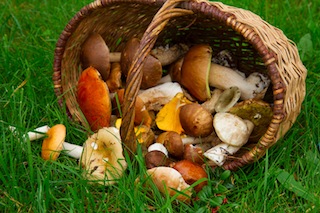 Wild Mushrooms
Wild MushroomsMore light on things that grow in the dark, will be shed in the future ...
We hope you have enjoyed browsing through these pages.
We intend to add more stories of (specific) stuff that grows in the dark, in the near future ... we hope you will drop by to visit again.
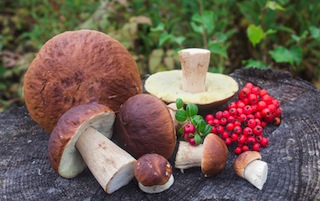 Wild Mushroom and Wild Berries
Wild Mushroom and Wild BerriesDo you have a PASSION you want to share with the world??? What better exposure than the INTERNET?!!!
Want to consider?
Well, you will need a place to "host" (place) your site, then the tools to build, run as well as track the performance of your Masterpiece!
OR, if you already have a site, but find that you are paying too much for tools and apps to run and track your site ...
Here's an All-in-One Solution for you! Hosting, as well as Tools to build, run and track!
